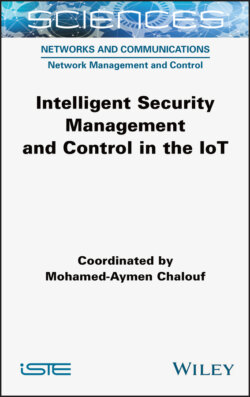Читать книгу Intelligent Security Management and Control in the IoT - Mohamed-Aymen Chalouf - Страница 32
1.4.3.2. Scenario 2: selecting the radio channel – the case of CR-VANET
ОглавлениеThanks to its cognitive capacity, the compatible intelligent radio vehicle can search for spectrum holes (white spaces) and take opportune decisions to transmit without interfering with the primary users. It can also make adaptations such as modifying the transmission power or the radio channels to meet QoS requirements for vehicle applications.
In this second scenario, we will consider a CR-VANET highway environment in the countryside and we will focus on infotainment applications, especially restaurant reservation. On the topology of CR-VANET highways, the speed of vehicles on the highways is significantly higher than in urban scenarios.
To evaluate performances, we consider the network architecture of a CR-VANET (Figure 1.5) where each vehicle is equipped with wireless communication interfaces (such as a 4G interface and a WiFi interface) and has intelligent radio capacities.
The simulations were made using ns3 paired with SUMO to generate real traffic mobility. The simulation parameters are listed in Table 1.4. For the same reasons cited in the previous scenario, the energy aspect will not be considered here.
Figure 1.5. Entertainment service on a highway in CR-VANET networks
Table 1.4. Simulation parameters for scenario 2
| Parameters | Values |
| Simulation duration | 50 s |
| Data traffic | Flow: 64 kbps |
| Vehicle mobility model | Car Following Model |
| Intelligent radio channels available | TV white space bandWiFi white space bandLTE white space band |
For the vehicle behavior model, we have adopted the Car Following Model, which is based on the following parameters: vehicle acceleration, vehicle deceleration, vehicle length, maximum speed of the vehicle and driver imperfection. The values of these parameters are presented in Table 1.5.
Based on the spectral resources detected, the suggested multicriteria decision-making module will calculate the scores of different channels and select the one with the highest score.
Table 1.5. Simulation parameters for the SUMO vehicle
| Parameters | Values |
| Vehicle acceleration | 2.5 m/s2 |
| Vehicle deceleration | 4.6 m/s2 |
| Average vehicle length | 5 m |
| Maximum vehicle speed | 140 km/h |
| Driver imperfection | 0.5 |
Figure 1.6. Variation of the scores of intelligent radio channels for the entertainment service
Figure 1.6 shows the impact of the dynamic network environment (such as the available bandwidth, the channel’s availability probability and the speed of the vehicle) on selecting the channel best adapted to the infotainment service (restaurant reservation). In Figure 1.6, we can observe that with the high mobility of candidate vehicles on the highways, the channel corresponding to the WiFi bandwidth is not a good candidate. We also observe a degradation of the score of the radio channel corresponding to the bandwidth of the LTE and an increase in the score of the channel corresponding to the TV bandwidth. The evolution of the scores over time justifies the decision to carry out a spectrum handoff, from the suggested module to the TVWS channel. Before running the spectrum handoff, we wait for the choice of the best channel to be confirmed for the following period. This will enable us to avoid unhelpful transfers. And to avoid running the spectrum handoff very late, this wait time will be adjusted automatically. In this scenario, we observe that the choice of TVWS is fully adapted to this context, not only in terms of QoS but also from the perspective of mobility. Indeed, this spectral band is characterized by a long range that is best suited to scenarios with high mobility.
